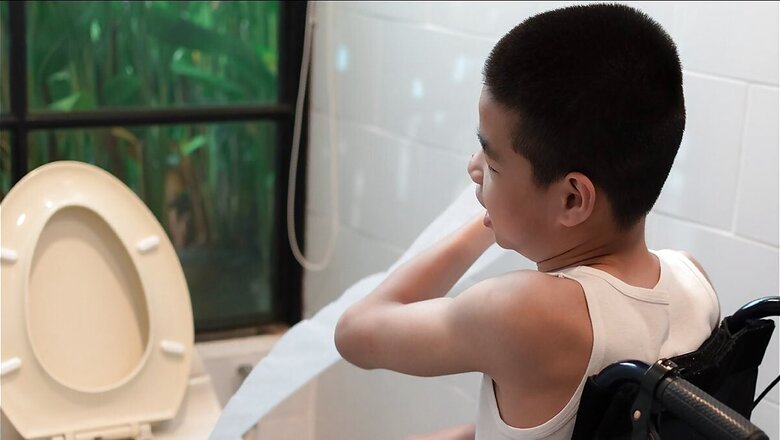
views
When we consume the news, it’s easy to feel overwhelmed about the state of the planet. Climate change is hurtling past estimates, deforestation continues at an alarming rate, loss of biodiversity and habitat loss continue unabated, and we are still pumping carbon into the atmosphere at a frightening rate.
It is easy to feel helpless. However, that doesn’t help the situation at all, and in fact, keeps us from taking everyday actions that can (and do!) add up in the long run. Our toilet hygiene habits, for one, have enormous scope for improvement. By making small adjustments to our daily routine, we can save water, prevent deforestation and habitat loss, and reduce our carbon footprint.
Children are the future of our planet. When we help our children form these habits at an early age, we compound the positive effects we create on the planet. The best part is that all these benefits accrue from very simple changes.
Use Reusable Cloth Diapers
Yes, this is more for the parents! And yes, there will always be times when you need to use a disposable diaper. However, if for the most part, you use reusable cloth diapers or nappies, not only do you save a pretty significant amount of money, but you also help keep your baby happier because of the reduced risk of diaper rash and allergies. Moreover, you are keeping all that waste out of our landfills.
Teach Children How To Flush Correctly
Once again, the first step is for the parents: consider installing a dual flush system that matches the water required for flushing with its need. According to reports, the large button is there to flush out solid waste and uses 6-9 litres of water. The small button flushes out liquid waste and uses 3 to 4.5 litres of water. Teach children how to use the buttons appropriately, and share with them the need for clean water all over the globe, and in India. This report by WaterAid India is a great starting place.
Reduce the Use of Disposables Where Possible
Water consumption is not the only environmental impact of children’s toilet hygiene. The products they use, such as toilet paper, wipes, diapers, and sanitary pads, also have a significant ecological footprint. There’s even a WWF report that links Sumatra deforestation to toilet paper. Moreover, most toilet paper is bleached with chlorine, which releases harmful chemicals into the environment.
Teach children how to use a bidet or a lota (a small pot or jug) to wash themselves after using the toilet. This can save water and reduce the use of toilet paper. Washing with water is also more hygienic and gentle on the skin than wiping with paper. However, make sure that children use clean water and soap to wash their hands thoroughly after using the toilet.
Educate girls who menstruate about the importance of proper disposal of sanitary products such as pads and tampons. These products should never be flushed down the toilet, as they can clog the pipes and cause sewage overflows. They should also not be thrown in the garbage bin, as they can attract pests and spread diseases. Instead, they should be wrapped in paper or biodegradable bags and disposed of in designated bins or incinerators. You can also opt for eco-friendly alternatives such as menstrual cups, reusable pads, or organic cotton tampons.
Allow for a Learning Curve
Particularly when it comes to disposables, children will have a learning curve. There is a reason why these products are so popular – they are easy to use! They’re also more convenient than the alternatives. There is a trade off involved here, so instead of using criticism, try to get children to engage with the problems these products cause down the line. For instance, when children realise that tigers are losing habitat because of our need for toilet paper, they are able to make the right connections, and see their actions in a different light.
Engage with the School
Reach out to your school to explore options on how this information can be taught to children, in an age appropriate and effective way. It may take a little championing, so empower yourself with the information you need, before the meeting.
Harpic and News18’s Mission Swachhta aur Paani is an initiative that champions the cause of inclusive sanitation, equality for all genders, abilities, castes and classes and the strong belief that clean toilets are a shared responsibility.
Mission Swachhta aur Paani has articles, videos and discussions on any and all topics related to toilet hygiene. Whether that takes the shape of conversations at work or championing toilet hygiene education in schools, Mission Swachhta aur Paani has all the information you need to do so with confidence.
Mission Swachhta aur Paani has undertaken several outreach programs of its own, aimed at schoolchildren. Harpic partnered with Sesame Workshop India, an educational non-profit working for the early developmental needs of young children, to promote positive sanitation, hygiene knowledge and behaviours among children and families through schools and communities, engaging with 17.5 million children across India.
In addition to creating programming aimed at young children, Mission Swachhta aur Paani also pioneered a programme to raise awareness and reinforce healthy toilet and bathroom habits among young children, developing and recognising them as “Swachhta Champions”. As a part of the Swachhta ki Paathshaala initiative this year, well known actor and celebrity mom Shilpa Shetty visited the Primary School Naruar in Varanasi, to talk to children about good toilet habits, hygiene and its link to good health.
There are many ways you can contribute to this vital social change. Join us here, to learn how.

















Comments
0 comment